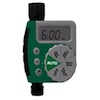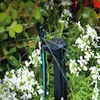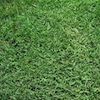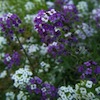Water Conservation in the Landscape
Ways To Conserve Water Outside The Home
Water use outside of the home and in the landscape for lawn and garden use is often a home's largest source of water usage. We'll examine several easy ways to cut outdoor water usage and conserve our planet's most precious resource (and save money as well).
To learn more about how you can minimize the use of water outside of your home, be sure to visit this fact-filled water conservation article Ways to Conserve Water.
Rain Water Harvesting
Rainwater Harvesting is the collection of rain water from rooftops into a collection tank. Rainwater harvesting systems can be as simple as a rain barrel, or as complex as an underground cistern connected to a pressurized irrigation distribution system.
Using collected rainwater reduces storm runoff into rivers and streams and cuts down of the use of water from ground or surface sources.
Find out if Rain Water Harvesting will work for you.
Water Conservation Facts
Our outdoor landscape, which includes turf areas, planting beds, trees and bushes, consumes the greatest proportion of water during the active growing season. There has been many advancements in irrigation techniques from irrigation controllers, to micro watering systems that can save up to 90% of this water that is consumed outdoors.
Learn about the latest technology that is now available to the homeowner to "green-up" your green in the article: Water Conservation Facts.
Water Saving Tips
Conserving water is the main criteria for 'green' landscaping and lawn design.
There are many ways to cut down on the amount of water used; reducing or eliminating grass lawns, planting drought-resistant plants, irrigating wisely and with high-tech controllers, and installing rainwater collectors and greywater systems to collect natural rainfall for dry times and recycling household water.
Learn about some great water saving ideas in our article: Water Saving Tips.
Drought Resistant Grass
There are many greener alternatives to a grass lawn, but many homeowners still want the traditional, attractive look of a lawn. To reduce the amount of water necessary to maintain a healthy green yard, plan ahead and plant a drought-resistant grass type in your yard.
Find out how to naturally save on your water bill with these great drought resistant grass that are available.
Read more about this in our article Drought Resistant Grass.
Grass Alternatives
Traditional grass lawns are beautiful but take a heavy toll on the environment: problems include pollution from mowing, excess water usage, and toxic fertilizer and pesticide usage. Grass lawn maintenance is also time intensive, consuming too much of your precious free time.
Alternatives to a grass lawn that can help minimize the financial, environmental, and time impacts include groundcover plants, clovers, ornamental grasses, and flower or shrub beds.
Consider Grass Alternatives for a lot less work and resource usage.
comments powered by Disqus








































































